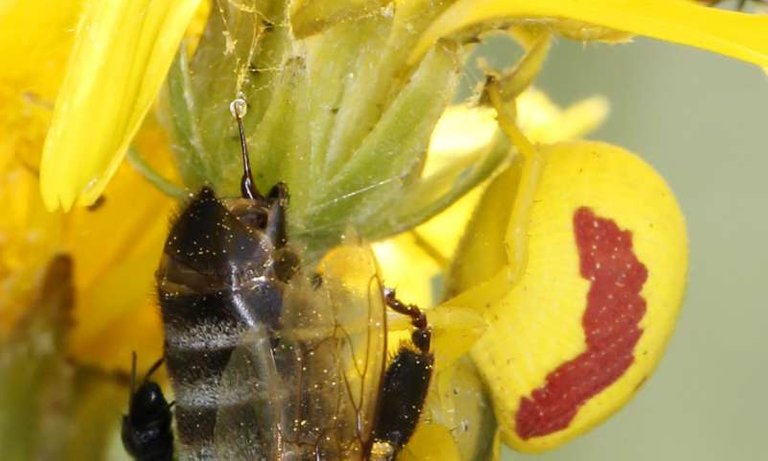
Four to six percent of plants, distributed over different angiosperm families, entice pollinators by deception. In these systems, chemical mimicry is often used as an efficient way to exploit the olfactory preferences of flies for the pur-pose of attracting them as pollinators. Here, we report a very specific type of chemical mimicry of a food source. Ceropegia sandersonii (Apo-cynaceae), a deceptive South African plant with pitfall flowers, mimics attacked honeybees. We identified kleptoparasitic Desmometopa flies (Mili-chiidae) as the main pollinators of C. sandersonii. These flies are well known to feed on honeybees that are eaten by spiders, which we thus predicted as the model chemically mimicked by the plant. Indeed, we found that the floral scent of C. Sandersonii is comparable to volatiles released from honeybees when under simulated attack. Moreover, many of these shared compounds elicited physiological responses in antennae of pollinating Desmometopa flies. A mixture of four compounds—geraniol, 2-heptanone, 2-nonanol, and (E)-2-octen-1-yl acetate was highly attractive to the flies. We conclude that C. sandersonii is specialized on kleptoparasitic fly pollinators by deploying volatiles linked to the flies’ food source, i.e., attacked and/or freshly killed honeybees. The blend of compounds emitted by C. Sandersonii is unusual among flowering plants and lures kleptoparasitic flies into the trap flowers. This study describes a new example of how a plant can achieve pollination through chemical mimicry of the food sources of adult carnivorous flies.
You are viewing a single comment's thread from: